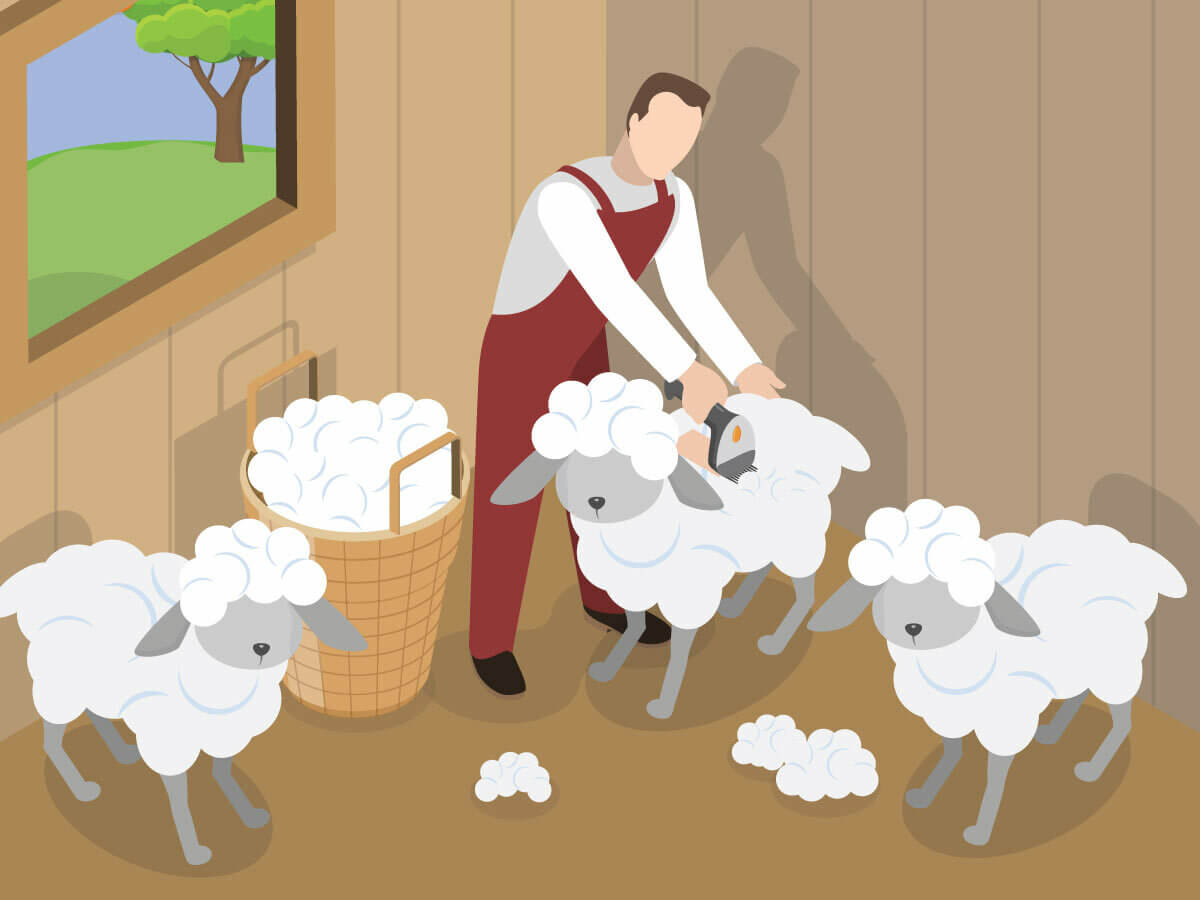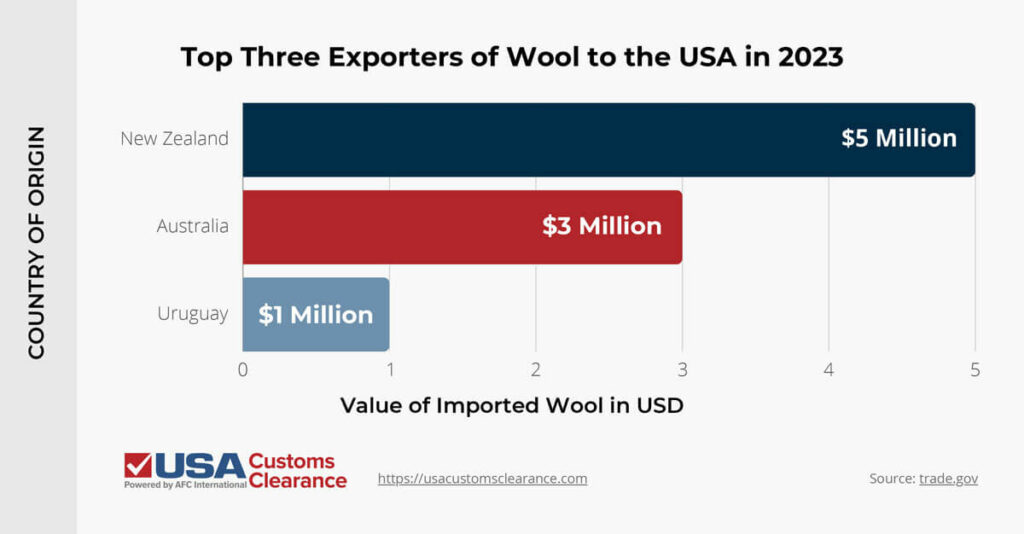
On a cold day, there’s nothing quite like snuggling up in a wool blanket or sweater for warmth and comfort. While the United States produces plenty of wool within its own borders, the highest quality fibers come from other countries.
Key Takeaways
Let’s dive into the details about wool imports, from sourcing to necessary documents and how a strategic import partner can help.
Before we get into detailed explanations of necessary documents, countries of origin, and the involvement of regulatory entities in the United States, it’s important to define what wool is according to the rules of international trade.
Wool is categorized under the Harmonized System (HS) code 5101. The HS defines wool as animal hair derived from sheep or lambs. While hair from other animals such as goats and llamas is sometimes colloquially referred to as wool, only hair from ovine animals is considered wool for international commerce purposes.
In this article, I’ll be focusing on information and procedures for importing unprocessed or minimally processed wool rather than products that are made from the popular fiber. If you’re looking for information about importing finished goods instead, you’ll find our guide to importing textiles helpful.
Australia and New Zealand are considered the best sources of high-quality wool in the world. This is largely due to the two countries’ flocks of Merino sheep.
Merino wool is one of the most luxurious and versatile fibers in the world. It is finer than other varieties of wool, leading to a less itchy final product. While this specific breed of sheep is found in other countries (including the United States), only the Australian and NZ bloodlines produce the finer fibers preferred for the manufacturing of high-quality textiles.
Uruguay rounds out the top three exporters of wool in the world, with their own flocks of the NZ Corriedale sheep producing fibers nearly as fine as those of Australian Merinos. This makes the South American country an attractive prospect for U.S. importers looking for quality wool with shorter shipping times.
Related: Importing Silk to the US
In 2023, U.S. importers brought approximately $10 million worth of wool into the country. By value, over 90% of that wool came from the aforementioned three countries. The precise value by country can be seen in the table below.

The remaining 10% of wool comes from Canada, Mexico, and a small handful of other countries.
While these values may seem unremarkable when compared to billion-dollar import industries such as vehicles and produce, keep in mind this is a fundamental material in the manufacturing of high-dollar clothing, blankets, bedclothes, and other textiles.
Related: 5 Rules for Successfully Importing Clothes to the U.S.
The USDA regulates imported wool via their Animal and Plant Health Inspection Service (APHIS). APHIS separates wool into two categories:
Neither of these products require a license or permit to import to the U.S. However, wool that is not free of blood stains must be shipped to a facility that has been approved by APHIS to handle the material.

Worried about the Strict Regulations? Ask Our Experts.
Our Customs Professionals Can Personally Guide You.
The United States-Mexico-Canada Agreement (USMCA) establishes duty-free trade between the three participating countries on a variety of goods and commodities. While the U.S. does not import much wool from Mexico or Canada, the agreement still has an impact on importers who use wool to create textile goods due to rules of origin for textile goods made in the USA.
For instance, let’s say you import a substantial amount of wool to spin into yarn, which will be woven into blankets or sweaters. These goods typically fall under the yarn-forward rule of origin, which means they’ll be considered American-made even though the fibers used to make the yarn were sourced outside a USMCA country. This will allow you to export your final goods free of duty to Mexico and Canada.
However, if you produce and sell a product that is classified as fiber-forward, even the constituent fibers must be sourced from a USMCA country to enjoy the benefits of the agreement. Under these circumstances, wool from Australia or New Zealand would disqualify the final product from duty-free status unless it makes up no more than 10% of the product’s overall components by weight.
You’ll need a few important documents to import wool. These are needed to stay in compliance with U.S. import regulations set by CBP, the USDA, APHIS, and other agencies.
Some of the documented items you’ll need to import wool include:
Our article “What Documents Do I Need to Import and Export?” goes into greater detail about the paperwork associated with the import process.
Any import transaction valued at $2,500 or more will require a customs bond to ensure that taxes, duties, and other import fees are paid at U.S. customs. Unless you’re importing a small amount of wool for personal use, you will most likely exceed this value and need to purchase a bond for your shipment.
Related: How to Get a Customs Bond
While wool isn’t a heavily regulated commodity, your shipment will still need to comply with CBP regulations and pass possible scrutiny from APHIS agents at the port of entry. If you’re concerned about your shipment being compliant, we can help.
USA Customs Clearance is ready to guide you through the process of importing wool into the U.S. Whether this is your first time bringing goods from overseas into the country or you’re a seasoned importer, our experience and knowledge can help. We’ll expedite your shipment’s clearance through customs while avoiding fines and delays that come from failing to comply with import regulations.
Our full list of services includes:
Give us a call at (855) 912-0406 or submit a contact form online. We’re ready to help you weave your way through the wool importing process.
 Copy URL to Clipboard
Copy URL to Clipboard

Google is changing how it surfaces content. Prioritize our high-quality guides and industry-leading coverage in search results by setting usacustomsclearance.com as a preferred source.
I'd like to import wool home accessory product in the future. Please advise all necessary information. Thank you.
Hello. I am thinking of importing wool from Nepal. I am wondering about storing this wool in regards to the potential damage insects such as moths can inflict. Any insights would be appreciated.
Thanks.
Sam C
Hello,
Do you do consultations on finding a vendor in the USA? We want to export wool to the USA but if we don't have a vendor, it won't make any sense.